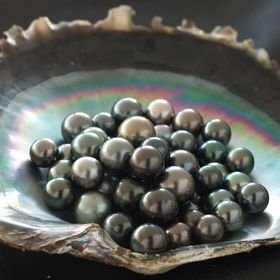Pearls are a timeless treasure that have been used for centuries to adorn jewelry and signify wealth and status. This is why many manufacturing companies in Coimbatore and other places are getting into the pearl business.If this industry is of interest to you as well you should know a few details before getting into the thick of things. This is because the pearl industry may not be as glorious as it seems. It has significant impacts on the environment, from oil spills in marine habitats to disease outbreaks among sea creatures. In this blog post, we’ll explore how pearl farming affects our planet’s delicate ecosystem and what can be done to minimize its negative effects. So grab your diving gear, and let’s dive into the depths of pearl farming!
Disease in marine ecosystem
Pearl farming has a significant impact on the marine ecosystem, one of which is the spread of diseases. The process of pearl cultivation requires the use of hatcheries where young oysters are grown and nurtured until they reach maturity. These hatcheries can become breeding grounds for bacteria and viruses that could potentially infect not only the oysters but also other marine organisms in the area.
The introduction of non-native species to support pearl cultivation can also exacerbate disease transmission. In some cases, these introduced species may carry new pathogens or parasites that native organisms have never been exposed to before, leading to devastating consequences for local ecosystems.
Moreover, crowded conditions in hatcheries can create an environment conducive to disease outbreak. When too many oysters are placed together in a small space, it increases their susceptibility to infections as well as reduces their chances for survival.
Disease outbreaks resulting from pearl farming activities pose a serious threat to our oceans and its inhabitants. As such, there is a need for more stringent regulations and guidelines governing this industry’s practices- all in hopes of minimizing its negative ecological impacts while still meeting consumer demand for pearls.
Bioaccumulation
As pearl farming continues to expand and grow around the world, it is important to consider the environmental impacts. The three main impacts we have discussed – oil spills, disease in marine ecosystems, and bioaccumulation – all have significant consequences for both local habitats and global biodiversity.
Through careful management of pearl farms, including proper waste disposal practices and attention to water quality, farmers can help mitigate some of these negative effects. However, more must be done to ensure that this industry remains sustainable over the long term.
By staying informed about the potential environmental implications of pearl farming and advocating for responsible practices within the industry, we can work together to protect our oceans while still enjoying the beauty of pearls.
Oil Spills
Oil spill is extremely rampant in pearl farming. Oil spills are one of the most dreadful environmental disasters caused by human activities. Pearl farming involves the use of boats and other heavy machinery for transportation, making oil spills a common occurrence in this industry.
When an oil spill happens, it can have devastating effects on marine life. The oil forms slicks on the surface of water, preventing oxygen from dissolving into the ocean’s depths. This lack of oxygen is harmful to fish populations as they need it to survive.
Additionally, when birds come into contact with the oily substance while diving for food or swimming in polluted waters, their feathers become coated in toxic substances that prevent them from flying and insulating their bodies effectively.
The aftermath of an oil spill can also last years after its occurrence. The toxins released into the environment during these incidents may not only harm marine life but also contaminate seafood consumed by humans.
Therefore, pearl farmers must take preventative measures such as regular equipment maintenance and emergency response plans to minimize oil spills’ likelihood and mitigate its impacts if they occur.
